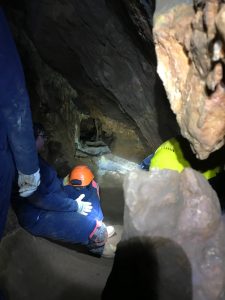ATA4: Love Scores
Finding my scores for the various types of love was very interesting. I knew that I didn’t care for playing games or any of the deception some people like to have. I also knew that I wanted my partner to be a best friend, and that I didn’t care about my partner’s job, heritage, or any of that. What I didn’t know is that I differ from other men in these areas. Apparently I place deception far lower on my importance scale. I am also more likely to be emotionally attached, suffering symptoms or feelings of anxiety etc. in a relationship depending on the situation.
It explains why I felt confused and upset that my friend continously wanted to lead on a friend of his that he was interested in dating. At the time I thought it stupid and cruel to the other person, but apparently the average man and woman are more okay with that than I am. I can also use this knowledge in the future when planning a relationship and taking into account how friendly I would like to be or what are responsibilities are to each other.

This image is from a trip I took last January to go spelunking with a group in the Blue Ridge Mountains. I chose this picture because according to my results, I place a high emphasis on sturge, the combination of love and friendship. This activity is not “romantic,” it is something adventurous and exciting that I would do with friends. However, in my ideal relationship, my partner and I would do these non-romantic activities together.
ATA3: Racial Tyrade
In this assignment, I found it difficult to discuss the racial tyrade because of my own race. I found it strange to talk about the racial slur that Michael Richard used and even writing it. I felt that I was not the appropriate person to lecture on such a thing, and so I tried to incorporate articles from black people who can better express their concerns about the use of such slurs as they are the people who deal with its dehumanizing effects and scarred history. Regardless, I hope to have adequately explained the issues with the rant as well as why I don’t know if it represents his true views.
I found this to be personally relevant because when I was growing up in middle school and high school, I often found the word used by classmates of all races. I did not understand the controversy behind the word and whether it was appropriate to use or not. It was only when we began discussing the actual conditions of slavery and some of the origins of discrimination that I began to understand the word and its uses. I found that this paper connected me to when I was much younger, trying to evaluate why my classmates casually used the word.

Image source: https://www.bbc.com/news/stories-53749800
This is a portrait of Cherry Wilson, author of one of the articles I read on the history of slavery and the origin of racial slurs such as the N-Word. I wanted to research how the word was viewed from a black person’s perspective before I started writing about whether it was appropriate or not.
ATA2: Self-Portraits
What I learned in this assignment was how I employ various techniques to present myself in a certain manner, either to myself or to other people. For my selection of photos, I chose those that exhibited the traits or accomplishments I am most proud of. I did this partially for others, so that they could see the best sides of me, but also for myself. These photos remind me of what I am capable of and who I want to be as a person. They remind me of overcoming obstacles and doubts of others, and doing what I wanted to do in the face of adversity.
I found it to relate to the concepts discussed in the course, especially how we choose to present ourself to others. In particular, I found it fascinating to analyze how the photos I chose did not really depict my everyday life, or what might be seen as the more accurate version of myself. Rather, it reflected my ideal self, the version of me that I aspire to be and strive towards (Baron & Branscombe, 2017). The assignment was personally relevant to me as it enabled me to look at who I was and how I presented myself to both myself and others.

This image is a self-portrait I took from the top of one of the hiking trails in Zion Canyon, the place I was most excited to see on my solo road trip. I was extremely proud of making it all the way there, and hiking to the top. It is one of the photos I chose to represent myself.
References
Baron, R. A., & Branscombe, N. R. (2017). Social psychology (14th ed.). Pearson.
ATA1: Heuristics in Social Cognition

(“Blue Tape Measuring on Clear Glass Square Weighing Scale,” 2016)
In my assignment, I had fun trying to come up with ways to link my initial example of the heuristic in question, and then also tie it in to the faulty decision making paragraph as well. For example, I wrote about how a previous car might influence a future car purchase, in both a positive and negative way, showing both sides of the Status Quo Heuristic. I thought it would be more informative to use the same example in a good or bad way to show how it could equally benefit or cause problems in the same theoretical scenario.
I particularly enjoyed my example for the Anchoring and Adjusting Heuristic. My example was making a small goal to start exercising instead of a larger, more intimidating plan. I relate to this because I did it myself. When I first starting exercising for my health, it was much easier to tell myself I was going to run one full circle around the track, or do five pushups every morning, than to try and set an unrealistic goal for myself. It made getting started much less intimidating. I think this is a heuristic that I use in a lot of big decisions to try and stave off nervousness.
I can relate this assignment to the sections in our textbook on persuasive techniques. Many of these techniques take advantage of heuristics to persuade the audience (Baron & Branscombe, 2017). Most commonly, they tend to overwhelm the audience by presenting an abundance of information, forcing the audience to commit errors associated with heuristic thinking (Baron & Branscombe, 2017). I chose the image of a scale because it relates to one of the examples of heuristics I used in my assignment. I wrote about how the anchoring and adjusting heuristic could be used to set an exercise goal and adjust it as needed with progress. The scale represents the goal to lose weight or improve body fitness over time.
References
Blue Tape Measuring on Clear Glass Square Weighing Scale. (2016). [Online Image]. In Pexels. https://www.pexels.com/photo/blue-tape-measuring-on-clear-glass-square-weighing-scale-53404/
Baron, R. A., & Branscombe, N. R. (2017). Social psychology (14th ed.). Pearson.